'Joker': From missing scars to a no-purple rule, the Oscar-nominated costume and make-up team shares behind-the-scenes secrets
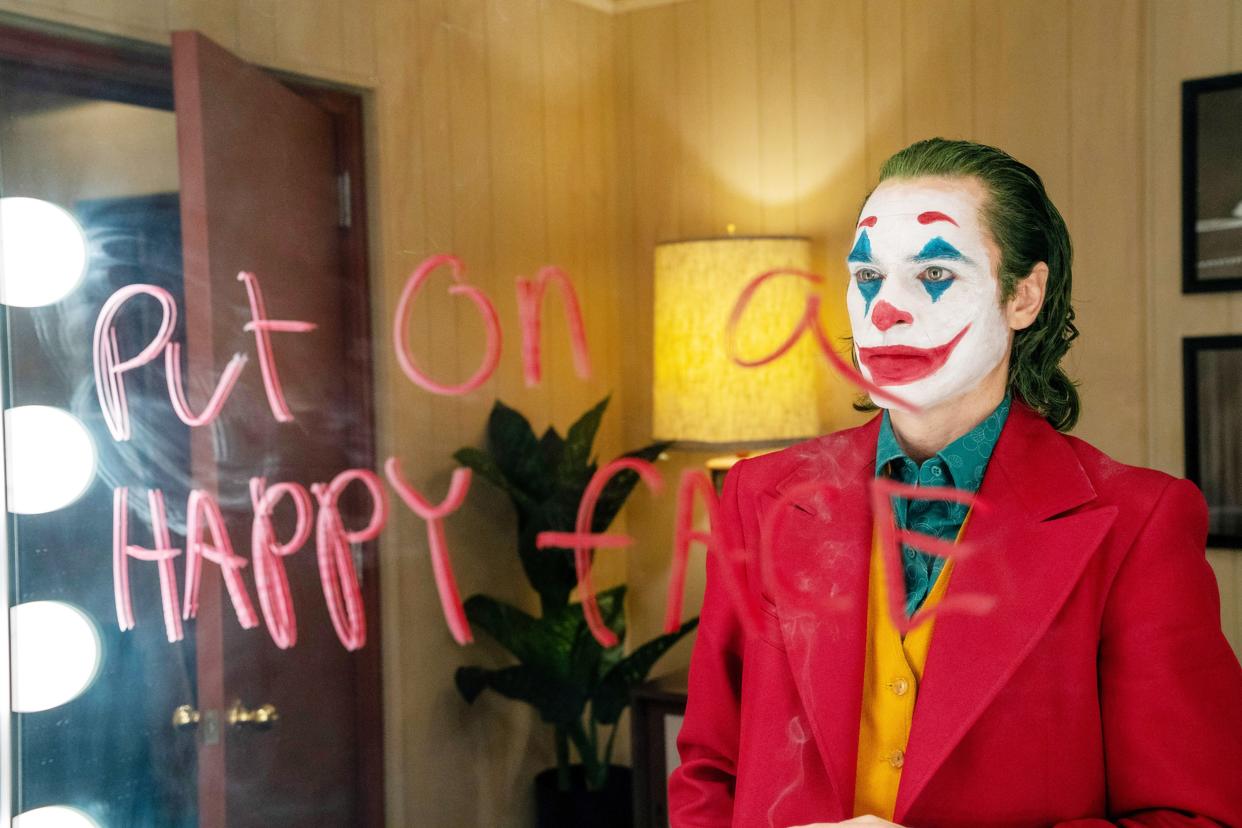
It takes a village to make a Joker. While much of the attention — and controversy — surrounding the dark-hearted origin story of Batman’s longtime nemesis has centered around Todd Phillips’s direction and Joaquin Phoenix’s titular performance, creating this version of the Clown Prince of Crime wouldn’t have been possible without the movie’s crew of behind-the-scenes artisans. That’s reflected in Joker’s 11 Oscar nominations, the most of any 2019 film and the most for any comic book-derived movie to date. In addition to nods for Best Picture, Best Director and Best Actor, Joker was also recognized in such below the line categories as Best Cinematography, Best Original Score, Best Costume Design and Best Makeup and Hairstyling, indicating that voters recognized how the sum of the movie’s parts added up to one distinct vision.
“We all worked as one team,” confirms Kay Georgiou, the head of the movie’s hair department, who shares a nomination in the latter category with makeup department head, Nicki Ledermann. “It’s the most amazing collaboration that doesn’t happen too often,” Ledermann adds. “Wardrobe would invite us to fittings to show us the costumes and colors, and the production design team was really helpful with texture.” And where superhero stories like Aquaman and Avengers: Endgame depend heavily on CGI, Joker has a handmade feel that further sparked the imaginations of its various craftspeople.
“That’s how I learned to make movies,” says costume designer Mark Bridges, making his comic book movie debut after previously winning Oscars for the glamorous fashions glimpsed in The Artist and Phantom Thread. “I touch all of the clothes; we distress and dye everything; I work with an amazing textile artist. Joker was very handmade and those are the kind of movies I like to make — that might be why I was hired as well.” (As you may recall, Bridge’s Phantom Thread statue also came with a bonus jet ski, courtesy of that year’s Oscar host Jimmy Kimmel. Bridges tells us that he’s since donated his aquatic prize to the Motion Picture & Television Fund.)
In separate interviews, Yahoo Entertainment spoke with Georgiou and Ledermann, and Bridges about how they helped craft who this particular Joker is... and how he came to be.
In early drafts of the script, Arthur Fleck was scarred inside and out
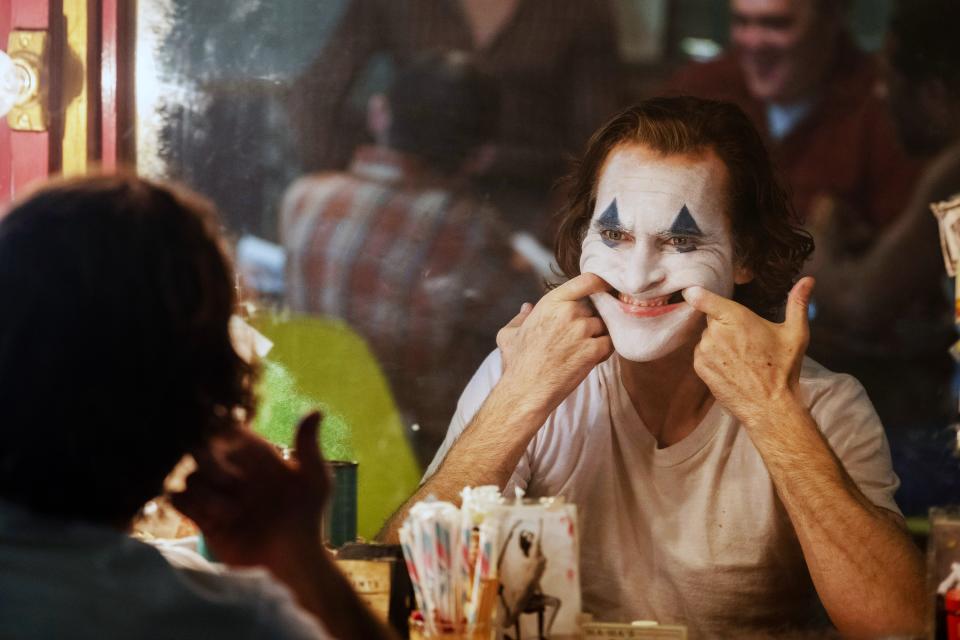
“If I’m going to have a past, I prefer it to be multiple choice,” the Joker remarked in Alan Moore’s seminal sort-of origin story, The Killing Joke, three decades ago. Phillips and co-writer Scott Silver used that piece of dialogue as license to create Arthur Fleck, a down-on-his-luck Gotham City citizen driven to Joker-hood by society’s ills and his own mental demons. As we come to learn in the course of the movie, those demons are the direct result of a childhood marked by emotional and physical abuse. While Arthur has suppressed those memories, the scars linger beneath his skin. According to Ledermann, early versions of the script described physical manifestations of those scars. “It was scripted that he had a smile with scars,” she remembers. “There were these minor scars at the edges of his mouth to show that he had cut himself as a kid — or that someone had cut him. They would have fit perfectly into Arthur’s history.”
Not for nothing, but they also would have complemented the Joker’s onscreen history: Heath Ledger’s version of the character in The Dark Knight made a point of calling attention to the scars that lined his face. (Phoenix recently paid homage to Ledger, who died in 2008, while accepting his SAG Award for Best Actor.) While Ledermann says that Arthur’s scars would have been far less pronounced, Phillips and Silver ultimately chose to abandon the idea as part of their overall mission statement to create a Joker who feels like a part of our world instead of a heightened version of it. “The scars would have made him more like the Jokers that came from the superhero world,” she explains. “You can create them as an internal pain that comes from Joaquin’s performance. I was very glad that we didn’t have to use prosthetics or anything to do that scarred smile; you didn’t need that visual to explain anything, because Joaquin did it all with his acting.”
Arthur’s suit tells a story
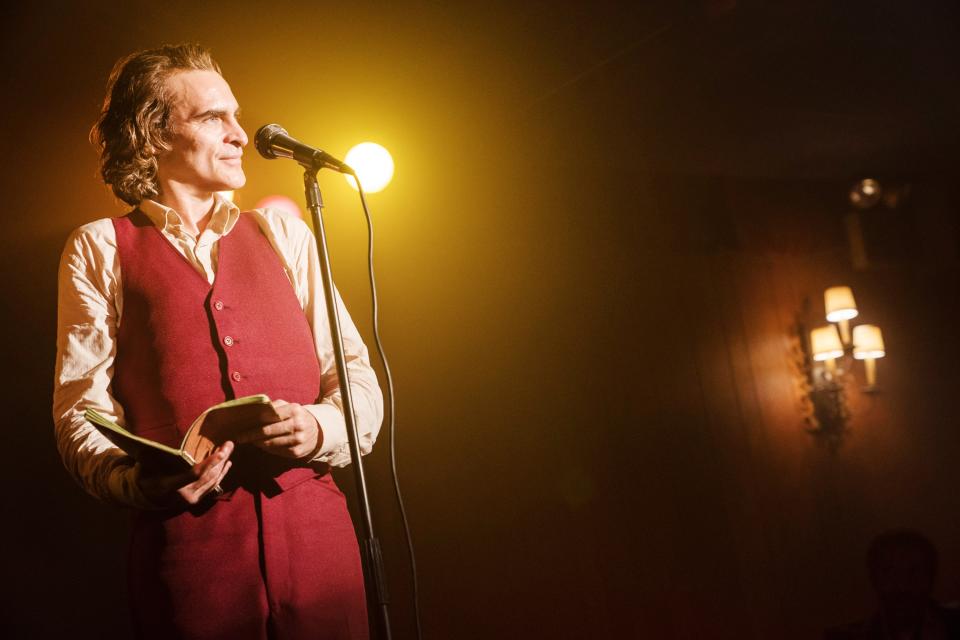
Another detail included in the original script that didn’t make it to the screen was the Joker’s taste in suit jackets: Phillips and Silver initially decided that Arthur would have a terracotta-colored suit in his closet that would later become a key part of his Joker ensemble. “It was a very much a ‘70s and ‘80s color,” Bridges says. “Todd knew that he wanted to set the film in the vague past, and told me, ‘Let’s just say 1981.’ But I felt terracotta wasn’t a strong enough color, so I suggested that maroon berry suit jacket that carries over into his Joker costume. I wanted to make sure that all of his Joker clothes came from somewhere: The vest is from his clown costume at the beginning of his film, and the red suit jacket is his stand-up comedy suit.” For the record, one color that Bridges never considered was the Joker’s signature purple, which dates back to his earliest comic book appearances. “We decided that part of making the character our own was not having him wear purple. He’s got his own iconic look.”
Next time you watch Joker, pay attention to that already-iconic maroon jacket in particular. “We used three different colors, and it becomes more red as he becomes the Joker. That way he doesn’t just show up in a suit — the idea was for it to be motivated.” Don’t feel bad if you didn’t notice that progression on your first viewing: Bridges stresses that he designed the jackets so that Arthur’s evolution into the Joker would be almost invisible. Also one key version of the suit ended up on the cutting room floor. “The stand-up suit was a typical ‘80s maroon. Later on, there’s a scene where Arthur is at his mother’s gravesite, and he’s wearing the middle-ground suit, which was a sunset maroon. We took that scene out, but it’s in some of the stills that are out there. And then the third one is the Joker suit. The intensity of what’s going on emotionally in the film changes, so I also wanted to change the intensity of the suit. You’re not supposed to notice it, you’re just supposed to feel it.”
The hair up there
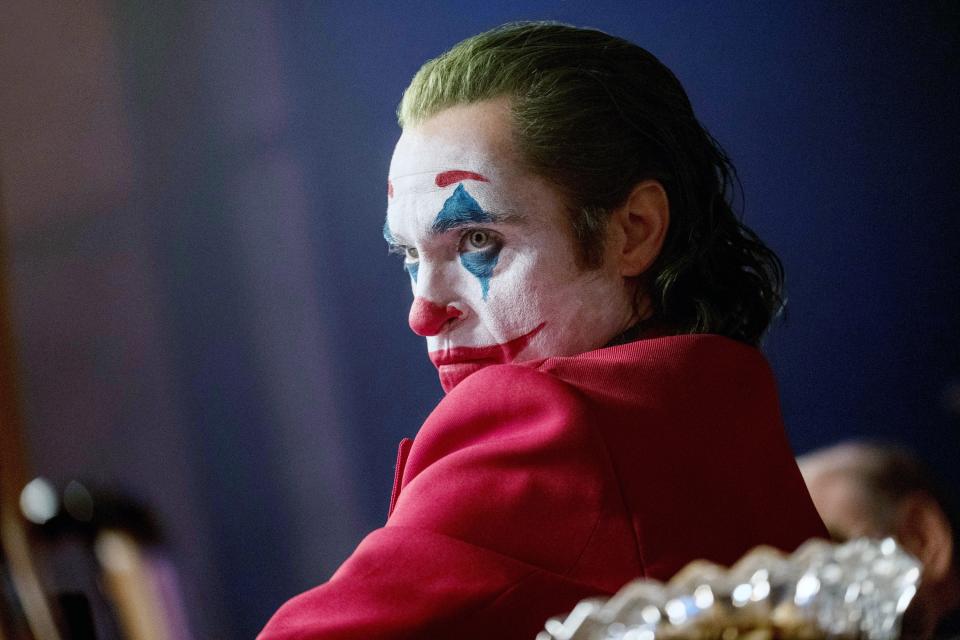
Phillips and Bridges may have decided to eschew the Joker’s penchant for purple clothes, but the director wasn’t about to mess with the character’s preferred hair color. “At our first meeting, Todd said that once Arthur becomes the Joker, his hair is going to be that classic green,” remembers Georgiou, adding that Bridges suggested that a “broccoli green” would complement the maroon-and-yellow suit. That resulted in a whole separate broccoli-themed conversation, though. “We were like, ‘Is it organic broccoli or sautéed broccoli?’ she says with a laugh. “I ended up doing some color samples and presented them to Todd, basically asking: ‘Which broccoli would you like?’”
While Phoenix didn’t take part in the broccoli discussion, he did have a say in Arthur’s hair styling… or lack thereof. “Arthur’s main concern in life was not his hair, and that’s the way it was supposed to look. It was always supposed to be slightly unkempt, slightly unwashed and never cared for. Joaquin’s hair was quite long when I met him, and it took several cuts to get it to the length it is in the movie. But it was never meant to look like a haircut.” Because the film’s production schedule demanded that Phoenix would regularly have to alternate between Arthur and the Joker — sometimes on the same day — Georgiou created a green wig that the actor could put on to avoid any lengthy stays in the make-up and hair chair.
“Joaquin is a person who is very shy and can’t sit still in a chair,” says Ledermann. “He wanted to do his own makeup, which if you think about it makes perfect sense. Of course, you can’t really do that in a film because you’re going back and forth and dealing with continuity. It wasn’t easy for us, because we had to double-team and do the make-up and hair really fast. He was losing a lot of weight and didn’t eat on set, so we had to bribe him with pretzels to come back and get touched up. But the fact that he didn’t give us much time worked for us in the end; the outcome is actually quite beautiful. It’s like a cool art piece we created on his face. And I have to say that Joaquin was so gracious afterwards. He told us, ‘You guys wrangled a coyote! You deserve this nomination more than anybody, because I know it was hard.’”
When good guys go bad
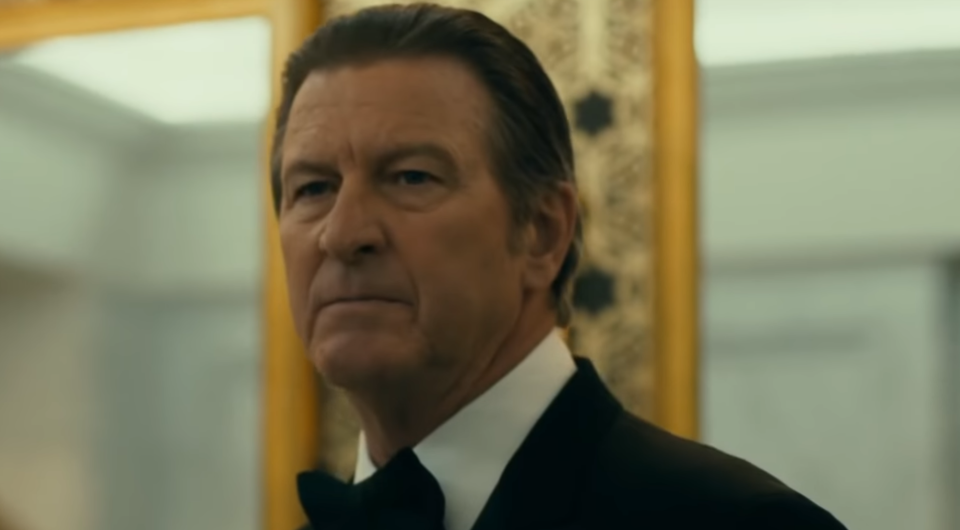
In most versions of the Batman legend, wealthy Thomas Wayne is a benevolent figure who only wants what’s best for his family and his city. But then again, most versions of the Batman legend are told from the perspective of his equally wealthy son, Bruce. Joker is set in the world of Gotham’s have-nots, and for struggling residents like Arthur, the Wayne family patriarch (played by Brett Cullen) represents what’s wrong with a society that turns a cold shoulder to their plight. “Thomas thinks he’s on top of the world and that he’s the only one who can handle things in an almost imperial way,” Ledermann explains. “He’s part of the one percent that doesn’t understand what’s going on.” That translated into a version of the character who is clean cut to the point of being sinister. “We kept his make-up very clean and crisp, very much the opposite of what Gotham is going through,” says Ledermann. “His hair was freshly cut and groomed,” adds Georgiou. “He’s one of the few people in the movie who looks like he’s had his hair done. And he combs it!”
Meanwhile, Bridges tailored Thomas’s three-piece suits so that they’d make the same kind of powerful impression as Bruce’s future Batsuit. “Giving him a very powerful, well-tailored image was the goal. How does he dress to impress? We had all of his suits costume made using the language of the early ‘80s.” That said, Bridges consciously avoided any Wall Street-like fashions that would be too outrageously of that era. “It’s a real fine line: You have to stay where it’s very specific, but also very understated. It needs to emphasize the piece, but not take you out of the moment. Todd has a great eye, so we collaborated a lot on how to keep it period, but still make it accessible.”
No animals allowed
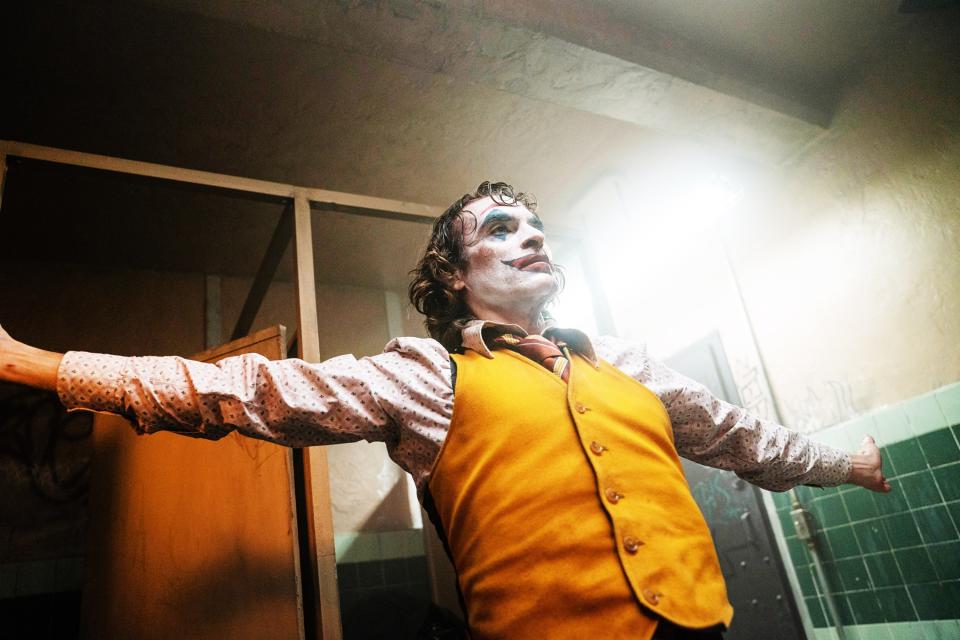
A dedicated animal rights activist, Phoenix convinced the Golden Globes to adopt an all-vegan menu this year. And Bridges says that the actor — who he previously collaborated with on The Master and Inherent Vice — makes a point of ensuring that no creatures are harmed in the making of his clothes. “We did all non-animal fabrics: no wool or silk or leather. I grew up with Batman on TV where Cesar Romero was the Joker. He always wore a green shirt and a necktie, which I liked. So I did look back a bit on various iterations of the Joker and then looked into Arthur’s closet for answers. Originally I had wanted him in a short raincoat, like a Ratzo Rizzo type of thing. But when we did camera tests, we decided that would be too enveloping, so that’s where Arthur’s short gold-hooded jacket came in.” Replicas of that jacket, by the way, are already being sold online although cosplay-savvy fans should be aware that those versions can’t boast to being animal free.
Speaking of cosplay, Bridges is well-aware that his Joker costume has become a Comic-Con staple. “Going into this, I really had not thought about the cultural implications of the Joker suit. I’m so flattered that a design of mine has had this reach. I saw it on Halloween, and it was also a Day of the Dead outfit. There are knock-offs being made, even the shoes and stuff. I’m so bowled over.” Listen up, cosplayers: Here are some free words of advice. “The secret is the color combination: If you get that right, then everyone will know who you are.”
Joker is playing in theaters and is also available to rent or purchase on Amazon and other digital streaming services.
Read more from Yahoo Entertainment:
2020 Oscar instant predictions: Can 'Joker' actually win Best Picture?
Joaquin Phoenix calls out 'meat and dairy industry' at Jane Fonda's climate protest before arrest
Want daily pop culture news delivered to your inbox? Sign up here for Yahoo Entertainment & Lifestyle’s newsletter.


